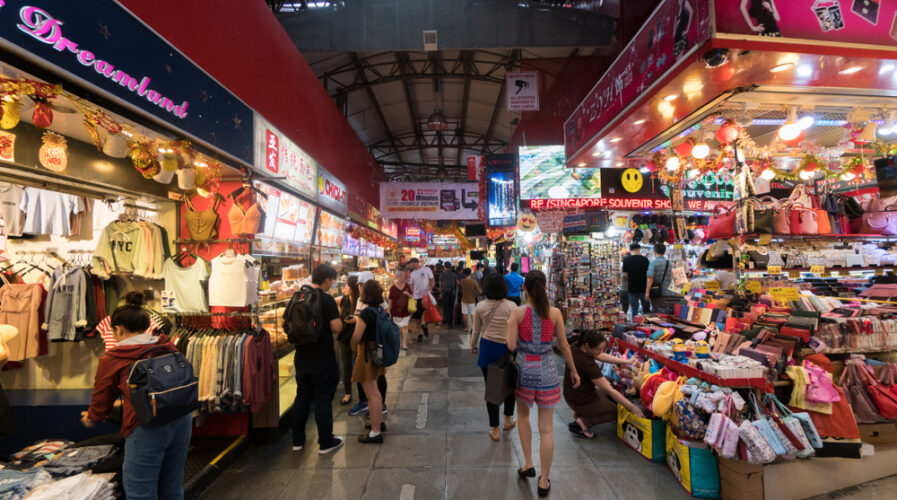
MSMEs adorn the lanes at Bugis Street, arguably Singapore’s busiest shopping market. (IMG/ Khing Choy, Shutterstock)
AI in retail no longer an option, but a necessity for MSMEs
The use of AI in retail isn’t exactly something new, but for a long time, it seemed like it was only accessible to companies with bigger pockets, such as e-commerce platforms, or large retailers.
But as technology evolves, so will associated costs, making them far more accessible to the masses. This is what’s happening with retail — as more consumers shop online, the time is ripe for micro, small and medium enterprises alike to utilize AI in retail, especially in e-commerce.
Tech Wire Asia had the opportunity to speak to Kaushik Sriram, Partner at Kearney, on how the use of AI in retail can help MSMEs thrive and remain competitive during a pandemic.
Could you briefly explain how AI can be applied to retail?
There are two common and relevant uses for AI in retail — the first pertains to the use of predictive analytics for modeling, and the second is in conversational AI.
Predictive analytics serve to analyze historical data, discover patterns and observe trends. These functions are incredibly useful to help users predict future trends to help sellers determine what can sell well.
When it comes to conversational AI (such as chatbots, messengers, etc.), they serve to augment the customer experience journey at various stages of the marketing funnel.
It facilitates the customer service offering that goes beyond enquiries, right into transactions, which makes customers more likely to enjoy your service and return to your store.
What can predictive analytics do for retailers?
Typically, predictive analytics features in models for marketing and sales, and businesses can easily start efforts with simple rule-based algorithms.
For the retail sector, especially in verticals such as fashion, these insights are particularly impactful, because the cash investment in these physical goods is high, and demand may greatly fluctuate and cause inventory issues.
For example, if the retailer stocks too many pieces of certain styles that may go out of fashion, they would be left with overstock that would be difficult to sell-off.
And during covid times like these, MSME retailers cannot afford to make the wrong choices when it comes to inventory stocking.
Getting rid of slow-moving goods may result in lowered revenues, such as when prices are heavily slashed to quickly get rid of stock to make space for newer ones.
Predictive analytics can help ameliorate these issues with demand forecasting in order to optimize inventory planning.
Demand forecasting sounds crucial but expensive. Is this true?
Well, demand forecasting informs supply planning. Contrary to popular belief, you don’t exactly need to have detailed customer data to use this.
You already have such information in your store, such as product (SKU) sell-throughs or sales volumes tracked during certain periods of time (e.g. paydays, 11.11, holidays, etc.).
These data are immensely powerful, and it is important to mine them to inform promotional or pricing strategies down the line.
Interesting. So how about conversational AI?
These days, customers’ needs are quickly changing, and it is increasingly showing that customers want more personalized, interactive experiences where their enquiries or concerns are seen as quickly as possible.
Those are applicable to both brick and mortar stores, as well as online, although arguably it is easier to maneuver for purely online retailers due to the ease of collecting customer information.
Are there other applications for AI in retail?
Specifically for brick and mortar stores, AI in retail can be used to identify traffic footfalls. This can be achieved using image processing solutions to understand customer visit patterns and optimize operations in terms of manpower and inventory stocking.
When it comes to MSME retailers, customer engagement, and marketing and sales analytics are important — they make up about 40 – 45 percent of business value for the retail sector.
Digitalization of customer engagement is key, and this can be achieved with just a simple AI chatbot. It will help keep the customer engaged throughout their purchase journey.
From placing orders, to checking delivery statuses — these go towards reducing friction. Conversational AI bots can be used to manage and stack orders, even.
What are the challenges that MSMEs face with analytics?
Online sellers primarily utilize two sales channels — an independent website, or through an e-Commerce platform.
SaaS analytics can be used on independent sites, whereas e-Commerce platforms can offer sellers analytics services to help tailor products listed to maximize their relevance to customers.
However for offline-only or hybrid retailers, when it comes to sales and marketing analytics, they often don’t have sophisticated POS (point-of-sale) terminals, which impedes the ability to collect and use data, such as when you need to improve assortment choices to target specific customers.
Information such as billing info, order, value, and even loose tagging of the type of customers will be useful — both for brick and mortar, or solo online stores.
So what can MSME retailers do to optimize the use of AI in retail?
The good news is, that there are a lot of cloud-based SaaS options that come with analytics out of the box. As they’re cloud-based, you don’t have to worry about losing data stored on-premise (e.g. when errors or accidents occur), or when scaling up or integrating more sophisticated applications.
Furthermore, these data often come with easy-to-understand visualizations to help with quicker decision making, and the analytics can be accessed anywhere, across different devices.
It would be wise for retailers to also look at upgrading their POS terminals to be able to capture better data — there are plenty of third-party vendors that offer such services.
When it comes to AI SaaS, depending on what your business needs, MSME retailers can start small with basic packages, and then add on more features when they scale up.
I must stress that it is important to do the necessary research and comparison between vendors and service providers before jumping into choosing the most popular or well-received one, however.
Different retailers have different needs, and it boils down to identifying and choosing what your business needs at which point of time it is in. And this is not just when you are finding a solution or product at the beginning of your AI journey, or for the short term — you should also assess if their offerings are able to support scaling up when your business grows.
The costs to implement these may be a little higher in the beginning, but the payoff will be worth any retailer’s time and investment in the future.
READ MORE
- Safer Automation: How Sophic and Firmus Succeeded in Malaysia with MDEC’s Support
- Privilege granted, not gained: Intelligent authorization for enhanced infrastructure productivity
- Low-Code produces the Proof-of-Possibilities
- New Wearables Enable Staff to Work Faster and Safer
- Experts weigh in on Oracle’s departure from adland


